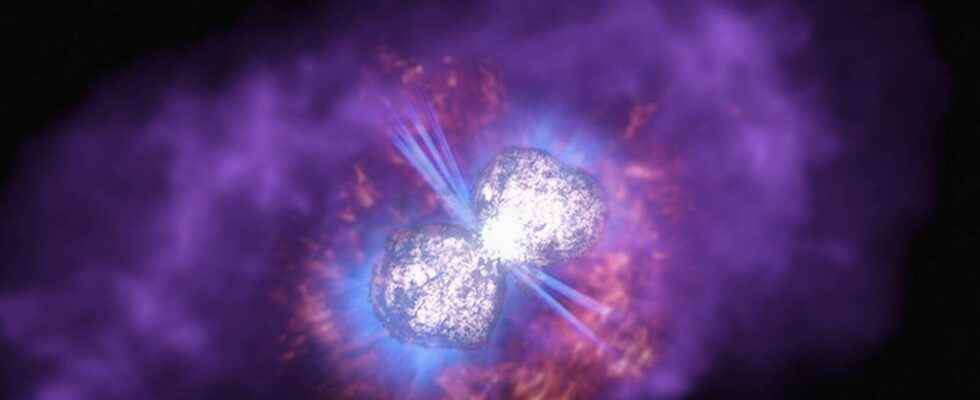NASA teams have modeled in 3D the phenomenon of the Great Eruption of the star Eta Carinae A, in the Eta Carinae stellar system. Having taken place in 1838, the Great Eruption saw the star gain sharply in luminosity for nearly 18 years.
Observe the eruption of a star that took place almost 200 years ago is now possible! The Nasa published on January 25 a video on the site Hubblesite.org, in which is modeled a famous astronomical event that took place between 1837 and 1856: the Great Eruption of Eta Carinae A, or Eta Car. L’star experienced a period of increasing brightness for more than 18 years, having caused strong variations in magnitude. The space agency thus observed Eta Carinae A with space telescopes Hubble and Chandra to obtain detailed imagery of the star through different spectra luminous.
An eruptive star system
In 1837 theastronomer English John Herschel (not to be confused with the famous William Herschel, his father) notes an increase in the brightness of Eta Carinae A, the latter exceeding the brightness of Rigel (7and brightest star in the skynorthern hemisphere). A year later, in 1838, his apparent magnitude drops further, meaning it becomes as luminous as the double star system Alpha Centauri, whose apparent magnitude is -0.27.
Eta Carinae A is part of a system of two stars concealed by the Homunculus Nebula, itself located within the Carina Nebula. The star is one of the most massive observed to date, classified as a “blue luminous variable”, i.e. a very luminous blue hypergiant. A study published in Nature in 2012 exposed the theories explaining the Great Eruption of the XIXand century.
What could be likened to a small supernova was actually a shock wave emitted from the surface of the star, the magnitude of which is estimated at 10% of the total power of a cataclysmic event such as that of a supernova. Eta Carinae A would have lost the equivalent of 10 solar masses during the Great Eruption. If the star regained its initial apparent magnitude in 1856, it has nevertheless experienced many fluctuations in luminosity until today.
Visions of the past
Hubble and Chandra thus observed the light rays of Eta Carinae on different spectra: visible, X-rays and ultraviolet. The data collected by space observatories has made it possible to establish collaboration between astronomers and artists of the Space Telescope Science Institute (STScI, or Space Telescope Science Institute). The objective was to model in 3D the raw information collected in 2D by Chandra and Hubble. Transposed into a video of more than 4 minutes, the modeling of the Great Eruption make it possible to admire and understand the phenomena that took place 200 years ago, at 7,502 light years of the earth.
If Hubble had already imaged the Homunculus Nebula in the past, the team of NASA astronomers indicates that it used a third space telescope: Spitzer. ” Spitzer made it possible to capture the infrared rays that pass through cosmic dust, which is usually too dense to allow visible light to pass through. This infrared data provided precise details of the environment within the Carina Nebula », adds Robert Hurt, scientist and project manager at theInfrared Processing and Analysis Center (IPAC), Caltech.
This is not the first time that NASA has tried to model in 3D cosmic phenomena: in 2019, then in 2020, the American agency notably published videos simulating the operation of a supermassive black hole.
Interested in what you just read?
